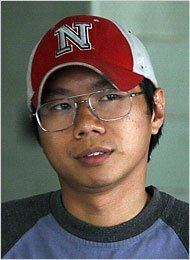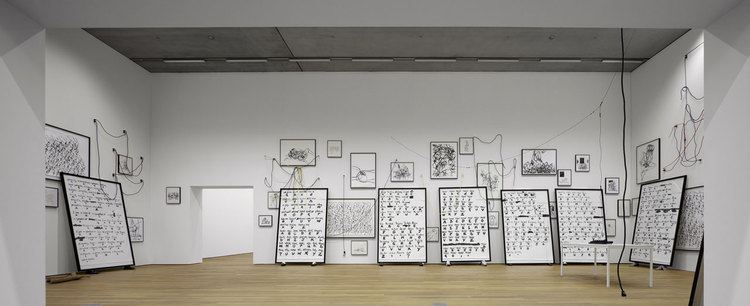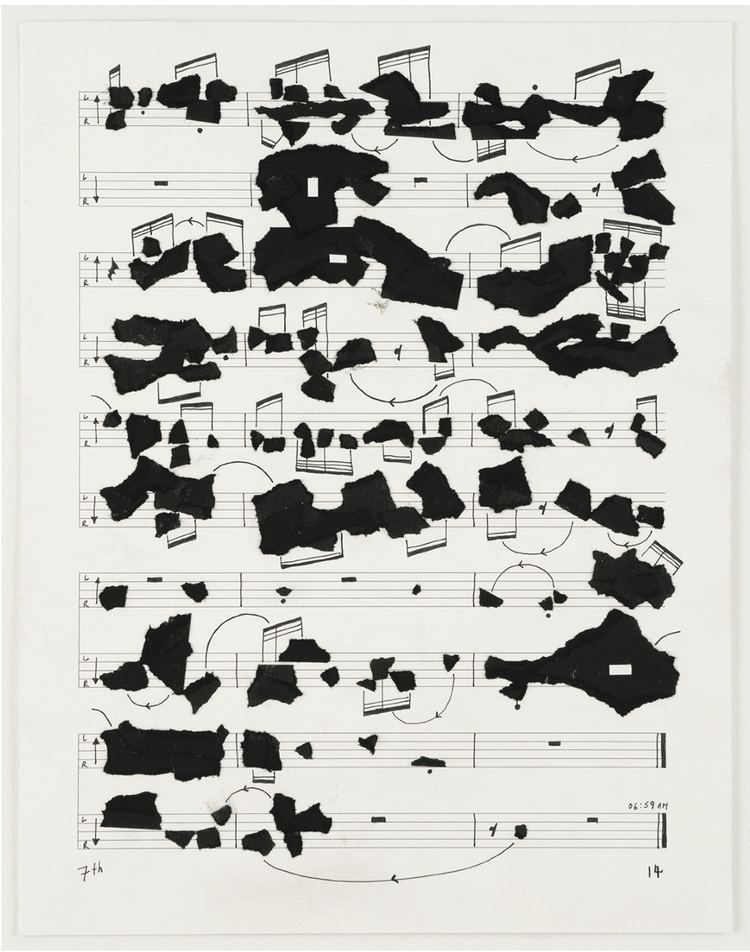Nationality American Role Artist Name Paul Chan | Children 1 Education BFAMFA | |
 | ||
Occupation Contemporary lartist, writer, publisher Notable work Waiting for Godot in New Orleans7 Lights Books Selected writings 2000-2014 Alma mater School of The Art Institute of Chicago, Bard College | ||
2013 wasserman forum on chris marker paul chan
Paul Chan (born April 12, 1973 in Hong Kong) is an American artist, writer and publisher. His single channel videos, projections, animations and multimedia projects are influenced by outsider artists, playwrights, and philosophers such as Henry Darger, Samuel Beckett, Theodor W. Adorno, and Marquis de Sade. Paul Chan’s work concerns topics including geopolitics, globalization, and their responding political climates, war documentation, violence, deviance, and pornography, language, and new media.
Contents
- 2013 wasserman forum on chris marker paul chan
- The hugo boss prize 2014 paul chan nonprojections for new lovers a the guggenheim
- Childhood and education
- Career
- Hiatus
- Return to art
- Exhibitions
- Collections
- Activism and Controversy
- Anti War Activities
- Journalism
- Other Controversies
- References

Chan has exhibited his work at the Venice Biennale, the Whitney Biennial, documenta, the Serpentine Gallery, the Museum of Modern Art, the New Museum, and other institutions. Chan has also engaged in a variety of publishing projects, and, in 2010, founded the art and ebook publishing company Badlands Unlimited, based in New York. Chan’s essays and interviews have appeared in Artforum, frieze, Flash Art, October, Tate, Parkett, Texte Zur Kunst, Bomb, and other magazines and journals.
The hugo boss prize 2014 paul chan nonprojections for new lovers a the guggenheim
Childhood and education

Paul Chan was born in Hong Kong in 1973. Hong Kong’s air quality had a deleterious effect on Chan’s health, and so in 1980, his family relocated to Sioux Falls, Iowa, and later to Omaha, Nebraska.

Chan attended the School of the Art Institute of Chicago from 1992-1996, receiving a BFA in Video/Digital Arts. Chan served as editor of the school newspaper F for three years. Chan attend Bard’s MFA program beginning in 2000 and graduating in 2002.
Career

In 1999, Chan launched his personal website www.nationalphilistine.com. The website would become the platform from which he distributed videos, animations, fonts and other works for free. One such project was Alternumerics (2000), a series of fonts available for use on Macs and PCs that transform what the user types into both legible and illegible blocks of text that explore both the “relationship between language and interactivity” and the “fissure between what we write and what we mean.” Another was Now Let Us Praise American Leftists (2000), a 3-minute 35 second experimental animation that sought to "eulogize and ridicule the American leftist movement of the past century.

Chan completed his 18-minute animation Happiness (Finally) After 35,000 Years of Civilization in 2002. In 2003, the animation became the first of Chan's works to be shown in an art gallery (The Green Naftali). When it was shown, the animation was played in a loop and projected on a “floating screen shaped and textured like a torn scroll.” The characters and events in the animation are heavily influenced by Henry Darger's novel The Story of the Vivian Girls. Happiness received a warm critical reception.

Following a 2002 trip to Iraq with the anti-war activists Voices in the Wilderness, Chan's work became increasingly concerned with war and politics. Re: The Operation (2002) is Chan's interpretation of what he imagined members of the Bush administration would look like were they fighting and being wounded in Afghanistan. The video consists of still images of Chan's drawings overlaid with audio and text. Baghdad in no Particular Order (2003) was created with footage Chan took of Baghdad while on his trip to Iraq. The video was composed of shots of ordinary life in Baghdad. Chan's third video in the same vein was Now Promise Now Threat (2005), a video consisting of clips of interviews of residents of Omaha, Nebraska. The interviews focused on the political climate of Nebraska, a deeply Republican state. Chan gathered Re: The Operation, Baghdad in no Particular Order, and Now Promise Now Threat into a single collection he named The Tin Drum Trilogy. Despite major differences in the “form, philosophy” and “spirit” of the three videos, Chan put them together as a trilogy connected by what he felt was “the room temperature of the times," as was the form expressed in Gunter Grass’ novel The Tin Drum (1959).

In October 2004 Chan had his solo exhibition debut at the Greene Naftali Gallery. It was there that he premiered My Birds...Trash...The Future (2004), a 17-minute two-channel animation featuring characters based on murder victims Pier Paolo Pasolini and Biggie Smalls adrift in a bleak landscape populated by a lone tree, birds from the Biblical book of Leviticus, hunters, and paparazzi in yellow Hummers. The animation was projected on both sides of a fourteen-foot long screen. The audio for the animation was broadcast from the muzzle of a toy gun that required viewers to lift it to one of their ears in order to hear it. The animation was accompanied by charcoal drawings and prints of birds.
In 2005, Chan began 7 Lights a series of large-scale projected animations based on the Biblical seven days of Creation. In a formal break with his previous animations, Chan designed7 Lights to be projected on the walls and floor of its venue, instead of on a rectangular screen. The animations forgo the hard-edged color and line of the previous animated works and are instead composed solely of light and moving shadows in the shapes of humans, animals, and consumer goods. In 2007, Chan debuted all seven of the projections of the 7 Lights series at the Serpentine Gallery in 2007. The projections were accompanied by charcoal drawings and collages of the projections of the series re-imagined as musical scores.
Chan's first trip to New Orleans was in 2006, a year after Hurricane Katrina. Having witnessed desolate neighborhoods and city residents still waiting for help, Chan was inspired to stage a production of Samuel Beckett's Waiting for Godot on the city streets themselves. While he organized the production with Creative Time and the Classical Theater of Harlem, Chan began living in New Orleans and teaching for free at Xavier University and the University of New Orleans. He started a "shadow fund" with Creative Time that matched the production cost of the play and was later donated to organizations in New Orleans involved in post-Katrina recovery. Godot premiered in the Lower Ninth Ward on Friday, November 2, 2007.
Chan's second solo show at the Greene Naftali Gallery in 2009 featured a nearly six-hour-long looping projected animation titled Sade for Sade's Sake (2009). The animation is composed of shadows in the shape of naked human figures "gyrating in various states of sexual frenzy. Parallels were drawn by critics between the violent sexual orgies depicted in Sade and the abuse of prisoners at Abu Ghraib. In addition to the animation, the exhibition included a number of pen and ink and charcoal drawings. My Laws are My Whores (2009) is an installation of nine charcoal portraits of the justices of the Supreme Court of the United States. In a return to his earlier Alternumerics project, Chan produced a collection of fonts based on the writings of Marquis de Sade.
Hiatus
Following Sade for Sade’s Sake, Chan took a hiatus from art making, an act comparable to Marcel Duchamp’s “retirement.” Chan used his time away from the Art World to found the publishing company Badlands Unlimited in 2010.
Return to art
Paul Chan ended his hiatus in April 2014 with the opening of the six-month-long show “Selected Works” in Schaulager, Basel. His two collections of sculptural installations Arguments (2012 - 2013) and Nonprojections (2012 – 2013) hark back to his earlier animated projections with the inclusion of working projectors as sculptural components.
In November 2014, Paul Chan was awarded the Hugo Boss Prize.
Exhibitions
Selected Solo Exhibitions
Selected Group Exhibitions
Collections
Activism and Controversy
Along with his history as an exhibiting artist, Chan has worked with a number of different political and activist movements. In 1997, Paul Chan supported the Teamsters-led UPS strike in Chicago.
Anti-War Activities
From 2002-2006, Chan was part of an American aid and activist group that opposed the US-led invasions and is called Voices in the Wilderness, and he worked in Baghdad in 2002.
On February 13, 2003, teams of artists and activists posted photos of Iraqis that Chan had taken during his trip to Iraq around New York City and other cities around the world. This activity became known as “Snapshot Action,” and was meant to show passersby real people in Iraq who might die if Iraq were to be invaded. Artists Emilie Clark and Lytle Shaw were arrested for a “quality of life infraction” for taping a photo to a metal lamppost.
On August 12, 2005 a US federal judge ordered Voices in the Wilderness to pay $20,000 in fines for violating sanctions against Iraq.
Journalism
Chan was a co-founder of the New York chapter of the Independent Media Center.
In 2004, Paul Chan collaborated with Josh Breitbart, Nadxi Mannello, and Elise Gardella to create A People’s Guide to The Republican National Convention (2004).
In 2011, Chan helped recruit volunteers to get involved with what would become known as The Occupied Wall Street Journal, a free newsletter written and distributed by Occupy volunteers.
In 2011, Chan was one of several artists to conduct an interview with Julian Assange. Assange is under investigation by US authorities for publishing classified documents leaked by Chelsea Manning.
Other Controversies
Art Review commissioned Chan to create an image for their annual Power 100 issue in 2014, but then refused to run the issue with the image on the cover in fear that it would offend readers.
